Showing Spotlights 113 - 120 of 203 in category All (newest first):
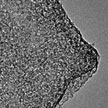 A carbon material with high electrical conductivity, high specific surface area, tunable pore structure, mechanically robust framework, and high chemical stability is an important requirement for advanced electrochemical energy storage. However, neither porous carbon or sp2 carbon can full meet these requirements yet. How to create a conductive carbon material with especially large pore volume, and hence large surface area, has therefore been a key focus in electrode research.
A carbon material with high electrical conductivity, high specific surface area, tunable pore structure, mechanically robust framework, and high chemical stability is an important requirement for advanced electrochemical energy storage. However, neither porous carbon or sp2 carbon can full meet these requirements yet. How to create a conductive carbon material with especially large pore volume, and hence large surface area, has therefore been a key focus in electrode research.
Oct 5th, 2015
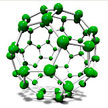 Against the double-whammy backdrop of an energy challenge and a climate challenge it is the role of innovative energy technologies to provide socially acceptable solutions through energy savings; efficiency gains; and decarbonization. Nanotechnology It may not be the silver bullet, but nanomaterials and nanoscale applications will have an important role to play. This article provides an overview of the issues and nanomaterials and applications that are being researched in the field of energy.
Against the double-whammy backdrop of an energy challenge and a climate challenge it is the role of innovative energy technologies to provide socially acceptable solutions through energy savings; efficiency gains; and decarbonization. Nanotechnology It may not be the silver bullet, but nanomaterials and nanoscale applications will have an important role to play. This article provides an overview of the issues and nanomaterials and applications that are being researched in the field of energy.
Jul 23rd, 2015
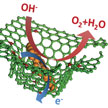 Researchers have been looking to design catalyst materials that can significantly enhance the performance of oxygen evolution reaction (OER), a key eletrode reaction that is an enabling process for many energy storage options such as direct-solar and electricity-driven water splitting and rechargeable metal-air batteries. However, OER suffers from sluggish kinetics - but a novel material inspired by the pomegranate might change that.
Researchers have been looking to design catalyst materials that can significantly enhance the performance of oxygen evolution reaction (OER), a key eletrode reaction that is an enabling process for many energy storage options such as direct-solar and electricity-driven water splitting and rechargeable metal-air batteries. However, OER suffers from sluggish kinetics - but a novel material inspired by the pomegranate might change that.
Jul 2nd, 2015
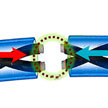 Self-healing of a device is different from material self-healing because the devices contain electronic circuits. Self-healing of a device includes materials self-healing plus alignment of electrodes, which is very difficult but essential. Researchers have now come up with the idea of using magnetic force to assist alignment of electrodes in a circuit, facilitating self-healing of the whole device. To realize this idea, they designed and fabricated an electrically and mechanically self-healable yarn-based supercapacitor by wrapping magnetic electrodes with a self-healing carboxylated polyurethane shell.
Self-healing of a device is different from material self-healing because the devices contain electronic circuits. Self-healing of a device includes materials self-healing plus alignment of electrodes, which is very difficult but essential. Researchers have now come up with the idea of using magnetic force to assist alignment of electrodes in a circuit, facilitating self-healing of the whole device. To realize this idea, they designed and fabricated an electrically and mechanically self-healable yarn-based supercapacitor by wrapping magnetic electrodes with a self-healing carboxylated polyurethane shell.
Jun 19th, 2015
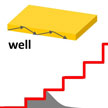 According to Planck's law, the emittance of a non-reflective black object - a blackbody - defines the maximum level of thermal emittance from an arbitrary object. Planck's law has been challenged in recent decades by predictions and successful demonstrations of the radiative heat transfer between objects separated by nanoscale gaps that deviate significantly from the law predictions. Researchers have now demonstrated another way to modify the object thermal emission spectrum and to force it to deviate from the one predicted by Planck's law.
According to Planck's law, the emittance of a non-reflective black object - a blackbody - defines the maximum level of thermal emittance from an arbitrary object. Planck's law has been challenged in recent decades by predictions and successful demonstrations of the radiative heat transfer between objects separated by nanoscale gaps that deviate significantly from the law predictions. Researchers have now demonstrated another way to modify the object thermal emission spectrum and to force it to deviate from the one predicted by Planck's law.
Jun 2nd, 2015
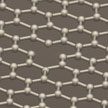 Counter intuitive to our idea of 'perfection equals best performance', researchers have shown that defects in nanocarbons could provide a breakthrough for increasing the quantum capacitance. By subjecting graphene layers to a reactive-ion etching process, the team has poked holes into graphene to create holey graphene, which can change the microscopic distribution of electrons and thereby increase the quantum capacitance of graphene by at least fourfold.
Counter intuitive to our idea of 'perfection equals best performance', researchers have shown that defects in nanocarbons could provide a breakthrough for increasing the quantum capacitance. By subjecting graphene layers to a reactive-ion etching process, the team has poked holes into graphene to create holey graphene, which can change the microscopic distribution of electrons and thereby increase the quantum capacitance of graphene by at least fourfold.
May 5th, 2015
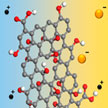 The commonly used separators in battery systems are porous polymer membranes, which separate the two electrodes while having little impact on the transportation of ions through the membrane. Polysulfides generated in a lithium-sulfur system can also diffuse freely through the membranes and react with a metal lithium anode, which results in the degradation of the battery's performance. If a novel, ion-selective but highly permeable separator can be developed, the shuttling of polysulfides and self-discharge would be effectively prevented, and both the energy density and power density of lithium-sulfur batteries could be significantly improved.
The commonly used separators in battery systems are porous polymer membranes, which separate the two electrodes while having little impact on the transportation of ions through the membrane. Polysulfides generated in a lithium-sulfur system can also diffuse freely through the membranes and react with a metal lithium anode, which results in the degradation of the battery's performance. If a novel, ion-selective but highly permeable separator can be developed, the shuttling of polysulfides and self-discharge would be effectively prevented, and both the energy density and power density of lithium-sulfur batteries could be significantly improved.
Mar 30th, 2015
 Supercapacitors offer an alternative source of energy to replace rechargeable batteries for various applications, such as mobile electronics and electric vehicles. Among the various types of supercapacitors, carbon nanotube based devices have shown an order of magnitude higher performance in terms of energy and power densities. The bottleneck for transferring this technology to the marketplace, however, is the lack of efficient and scalable nanomanufacturing methods. Researchers have now developed a new scalable method to to directly spraycoat CNT-based supercapacitor electrodes.
Supercapacitors offer an alternative source of energy to replace rechargeable batteries for various applications, such as mobile electronics and electric vehicles. Among the various types of supercapacitors, carbon nanotube based devices have shown an order of magnitude higher performance in terms of energy and power densities. The bottleneck for transferring this technology to the marketplace, however, is the lack of efficient and scalable nanomanufacturing methods. Researchers have now developed a new scalable method to to directly spraycoat CNT-based supercapacitor electrodes.
Mar 3rd, 2015
 A carbon material with high electrical conductivity, high specific surface area, tunable pore structure, mechanically robust framework, and high chemical stability is an important requirement for advanced electrochemical energy storage. However, neither porous carbon or sp2 carbon can full meet these requirements yet. How to create a conductive carbon material with especially large pore volume, and hence large surface area, has therefore been a key focus in electrode research.
A carbon material with high electrical conductivity, high specific surface area, tunable pore structure, mechanically robust framework, and high chemical stability is an important requirement for advanced electrochemical energy storage. However, neither porous carbon or sp2 carbon can full meet these requirements yet. How to create a conductive carbon material with especially large pore volume, and hence large surface area, has therefore been a key focus in electrode research.
 Subscribe to our Nanotechnology Spotlight feed
Subscribe to our Nanotechnology Spotlight feed





